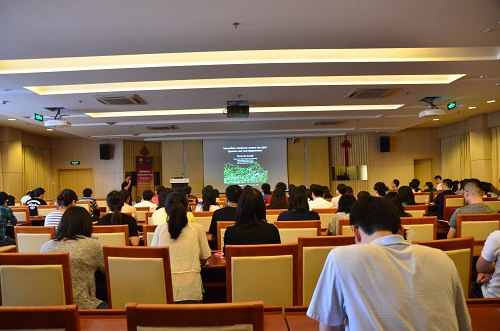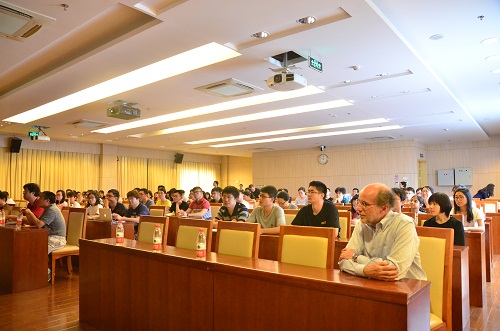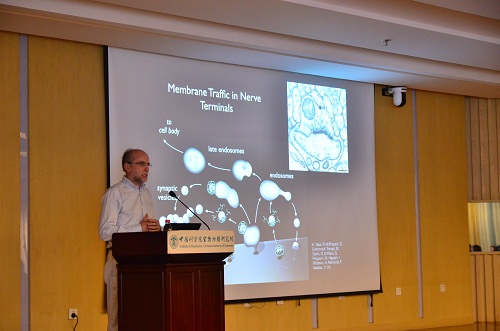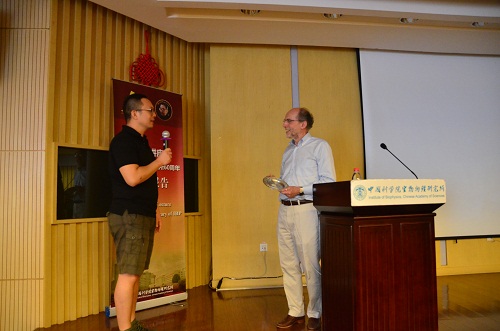Prof. Pietro De Camilli, member of Yale University School of Medicine, visited IBP and Gave BEI shizhang Lecture
On June 11th, 2018, Prof. Pietro De Camilli visited Institute of Biophysics, CAS,at the invitation of Professor Junjie Hu of the National Key Laboratory of Biomacromoleculesand gave a lecture entitled “Intracellular membrane contact sites, lipid dynamics and neurodegeneration”. The lecture was a special report on the 60th anniversary of the founding of theShizhangBei Lecture.
Prof. De Camilli’s labhas long been dedicated to the studiesof mechanisms underlying membrane dynamics, with emphasis on their roles in neuronal function and neurotransmission in particular.His team recently leads a series of discovery of membrane contact sites not leading to membrane fusion, particularly such contacts in lipid exchanges between membranes, a process thought to play a key role in maintaining the appropriate lipid composition of different membranes.
In the presentation,Prof. Pietro De Camilliintroduces the detailed process that neurotransmitters are stored in small “synaptic” vesicles that deliver their content into the synaptic space by fusion with the outer membrane (plasma membrane) of the cell and proposes the importance of precise regulation of lipid components and unresolved specificsproblem.
He then combines several examples to focus on lipid transport at the contact sites of different organelle membranes. ORP5 and ORP8 tethering between the ER and the plasma membranemediate PI4P/PS countertransportvia the ER protein VAP. Extended-synaptotagmins(E‐Syts), which locate atER and bind the plasma membrane (PM) via C2 domains. E‐Syts form a dimerand transport glycerophospholipids between ER and PM via SMP domains.In addition, there are intramolecular interactions and autoinhibitory mechanisms between the C2 and SMP domains, and calcium ions have a dual effect in activating E-Syts activity, which can promote the interaction between C2 and the plasma membrane and also remove the autoinhibitory mechanisms between C2 and SMP domains. In vitro lipid transport experiments, elevation of cytosolic Ca2+ enables E‐Syt1 lipid transfer activity more efficiently. The latest experimental results also show that the SMP domain of E-Syt is likely to be transported through the intermembrane shuttle instead of the membrane-to-membrane channel mechanism.
Finally, Professor De Camilli briefly introduced a new discovery of a family of proteins that mediate the contact between the endoplasmic reticulum and a variety of organelles. Mutations in this family of proteins are associated with neurodegenerative diseases, demonstrating their important physiological significance. These proteins have the activity of lipid transport and organelle membrane recognition, and play a very important role in lipid exchange based on organelle contact.
Prof. De Camilli suggested that the contact research between intracellular organelles is a rapidly developing field, which has also attracted the interest and attention of the participating researchers and students. Teachers and students have askedmany interesting questions. The atmosphere is very lively. Prof. De Camilli patiently answeres every question and conducts in-depth discussions and exchanges on the frontiers of field-related development. The academic atmosphere of the entire venue was rich and the audience was well received.






